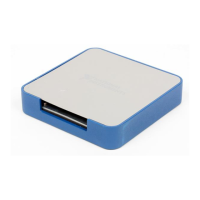© National Instruments | 2-11
NI SCB-68A User Manual
Figure 2-7. AC-Coupled Floating Source Differential Connections with Balanced Bias
Resistors
Refer to the Installing Bias Resistors section for information about installing bias resistors on
the SCB-68A.
Using Non-Referenced Single-Ended (NRSE) Connections for
Floating Signal Sources
It is important to connect the negative lead of a floating signals source to AI GND (either directly
or through a resistor). Otherwise the source may float out of the valid input range of the NI-PGIA
and the DAQ device returns erroneous data.
Figure 2-8 shows a floating source connected to the DAQ device in NRSE mode.
Figure 2-8. NRSE Connections for Floating Signal Sources
All of the bias resistor configurations discussed in the Using Differential Connections for
Floating Signal Sources section apply to the NRSE bias resistors as well. Replace AI– with
AI SENSE in Figures 2-4, 2-5, 2-6, and 2-7 for configurations with zero to two bias resistors.
The noise rejection of NRSE mode is better than RSE mode because the AI SENSE connection
is made remotely near the source. However, the noise rejection of NRSE mode is worse than
DIFF mode because the AI SENSE connection is shared with all channels rather than being
cabled in a twisted pair with the AI+ signal.
Using the DAQ Assistant, you can configure the channels for RSE or NRSE input modes.
–
+
AI GND
V
s
AC Coupled
Floating
Signal
Source
AI+
AI–
AI SENSE
AC Coupling
DAQ Device
–
+
AI GND
R
AI SENSE
AI
V
s
Floating
Signal
Source
DAQ Device

